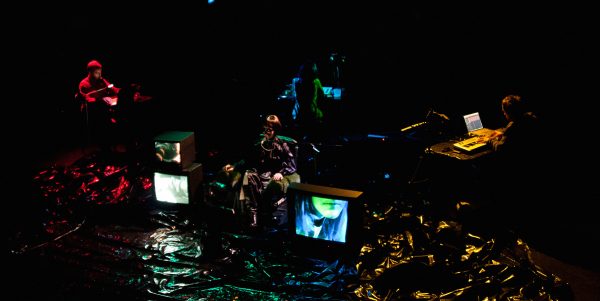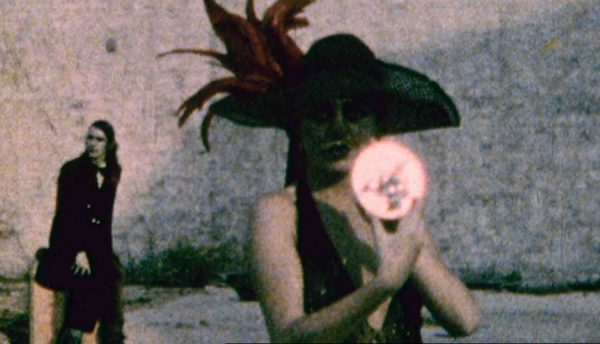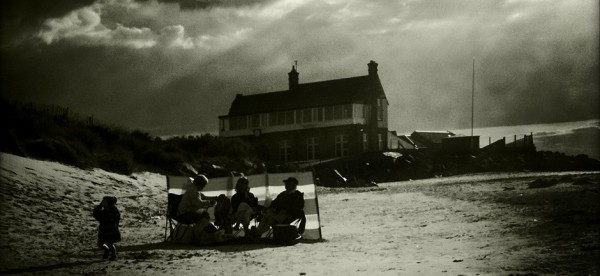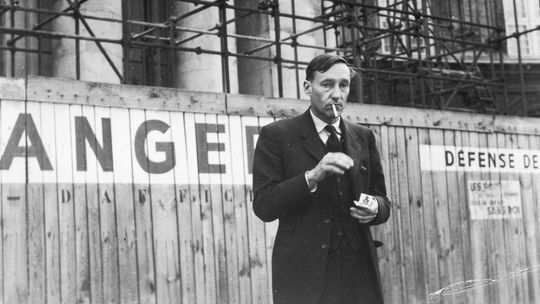The set is made of painted cardboard. Four performers grab clothes from a large pile and feedback emanates from a guitar off to the side. Television sets flicker on and off. A performer sings, or perhaps declaims, an aria of collaged texts about community service in a slippery, atonal scale. In the background, another performer lip-syncs in a mirror, while the others stalk around the set, painting and fiddling, entranced by the gestures their own bodies can make. As he finishes, the cast comes together to ‘sing’ the remainder of the text while waving racing flags. This is a scene from Object Collection’s Problem Radical(s), performed at PS122 in 2009. In this piece there is text, there’s music, there are actors, but where do ‘narrative’ and ‘character’, de facto, some would say essential, aspects of theatre, fit into this?
There has always existed a stylistic flux at the heart of opera, and the ever-fluid interplay between composers, patrons and audience has pushed this hybrid genre into many permutations over the years. These days, due to the mounting cost of opera production and diminishing audiences, major opera houses tend to stick to the tried and true, and a commission for a young composer is quite rare. Active since 2004, Object Collection is one of the groups pioneering new ways of interfacing music and theatre, a forum for the operatic and yet an exercise in the genre’s fluidity.
Founded by composer Travis Just and director Kara Feely, Object Collection mounted their first original piece in 2005. While music is central to their practice, their decision to describe their works as opera is practical as well as aesthetical. Feely says they ‘started calling them operas in 2007 or 2008. Partly because it’s difficult to try to describe to different producers and presenters what we’re doing exactly. We’re trying to do this very intricate, precise theatre thing, but there’s a huge music component to it as well, and they’re in balance. So sometimes when people from a theatre background see the show they don’t realise that there’s a score.’[1] Genre confusion runs in both directions: ‘But also then, from the music perspective, people don’t think of it as music because there’s all this theatre going on […] “Opera” seemed to get people on the same page as to which parameters we’re working with.’
As Just says, ‘As soon as all the text was scored, that was when it started feeling like something different. Continuous music, that was all one piece.’ While opera is a convenient term, Just takes the implications seriously: ‘As a composer it was pretty weird because opera was “that thing” {…} if you’re calling it an opera how do you square it with Mozart and Schoenberg? If you’re going to use the term, use the term.’ Much can be said to the tiredness of the classification ‘experimental’, but for Object Collection, the designation ‘experimental opera’ both grounds their work and liberates their practice from the confines of its own form.
Object Collection’s piece Problem Radical(s) is undoubtedly one such experimental opera. Instead of traditional orchestral grandeur, Just has merged the sing-song recitative of the piece with walls of harsh noise, sculpture, radicalism and alternating sparse rumblings. As in traditional opera, Problem Radical(s) is spectacle, but in a much more prescient way – instead of grandeur, we are left with piles of clothes, decay. As evidenced by the title of the piece, the group is well aware that the political content of their pieces makes the marketing difficult. Just: ‘It’s overt. We’re working on a piece right now about radical political speech {…} Our work is probably not going to generate an October Revolution, but our hopes are that aesthetically it inhabits that space.’
Composer Robert Ashley is a foundational influence on their work, and in 2011 the group toured with a staged version of Automatic Writing (1979). Like Object Collection, Ashley’s career involved a number of experimental works that also utilised the notion of opera as a starting point. Similarly, Ashley featured small ensembles of performers, and his works often took place in unconventional venues for opera. Luigi Nono’s works Intolleranza 1960 (1961) and Al gran sole carico d’amore (1975) also set a precedent for fusing opera with an auto-undermining radicalism, also employing slides to create a ‘moving collage’, like a precursor to video.




